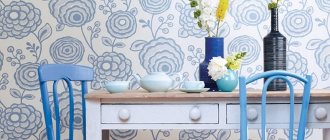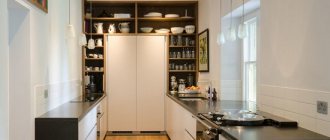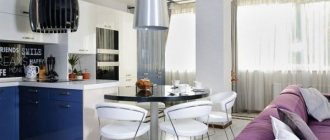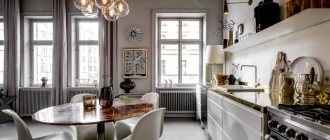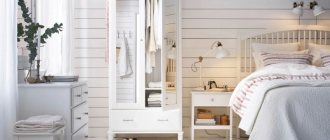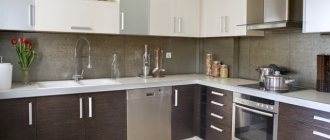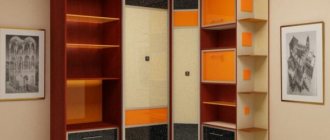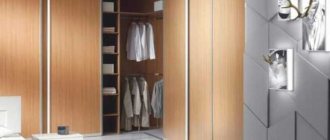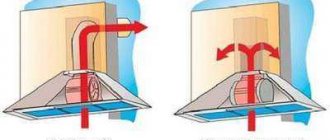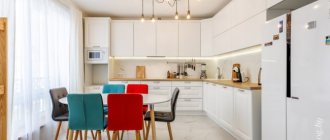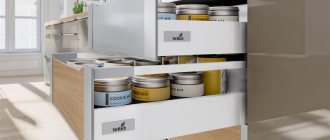Modern kitchens are increasingly designed as a single space with a dining room or living room, so the appearance of the kitchen, which should always look neat and stylish, is becoming important. To prevent splashes of grease, drops of water and stains from spoiling the appearance, it is customary to cover the work area in the kitchen with an apron, which protects the wall between the wall and floor parts of the furniture set. Designers suggest using glass aprons for the kitchen; photos of interesting design options can be seen below.
Pros and cons of glass splashbacks
Compared to MDF, plastic, ceramic tiles, glass panels have a number of advantages.
- We return pelargonium to houses and apartments
Read
- Glass panels, or, as they are also called, skinels (from the English word “to sheathe”) have become popular due to the variety of designs. Any designs in any color, including three-dimensional ones, can be transferred to this type of coating. With the help of glass panels, the room is quickly updated and transformed, filled with bright colors. For a small kitchen, glass panels are an ideal solution, because they visually increase the space.
- Due to special processing, the glass is resistant to chemical, mechanical and temperature influences, the panels have a long service life.
- Glass, unlike other materials, does not have a porous surface, so grease and dirt are not absorbed, and cleaning can be done quickly and without much hassle. The glass panels on the kitchen apron are a monolithic slab, so there is no problem of dirty seams.
- Safety is of no small importance. Treated glass has increased strength, excellent resistance to mechanical damage. If the blow is strong, then the glass, breaking, does not fly into fragments, but crumbles.
- Easy to install structure.
Glass decorative panels also have disadvantages, which it is preferable to know about before purchase and installation:
- the cost is higher than other coatings;
- Fingerprints and stains remain on the glass due to poor cleaning;
- After installation it is not possible to install additional sockets.
What is it like, a mirrored apron for the kitchen?
Progress does not stand still, and mirror glass is now not inferior in strength and reliability to other modern finishing materials. A mirrored apron for the kitchen is most often presented in two versions:
- Mirror mosaic apron. It is made from mirror fragments, the thickness of which is at least 5 mm. This size makes the material durable, reliable, resistant even to shock and mechanical stress. Of course, a directed strong blow can damage the glass, but various kitchen accidents of mirror mosaics are not terrible. As a rule, this material is attached to a special flexible base, which is glued to the wall. Mirror mosaic creates an unusual, sometimes completely fantastic interior. It goes well with other types of glass or ceramic mosaics, allowing you to create truly custom looks for your work area. If you want your apron to become a true decoration of the room, feel free to opt for a mirror mosaic.
- Apron made of mirror panels. For their manufacture, specially tempered glass is used. It is so durable and stable that in terms of these indicators it is a worthy competitor to ceramic tiles. The length of one panel is up to 3 meters. A mirrored apron, which reflects the interior of the kitchen, has the amazing ability to expand the space. Even the most compact room will seem one and a half times larger when reflected in the mirror of the work area. By the way, Feng Shui experts assure that such an apron is perfect for attracting the energy of well-being into your home. Everything you cook will be multiplied on the mirror surface, and this will contribute to the growth of the family’s well-being. However, there is one caveat: clutter and accumulation of dirty dishes should be avoided at all costs - they are also reflected in the mirror. Returning from the Feng Shui heights to familiar everyday soil, it should be noted that the mirror panel creates a single space. If mosaic fragments crush the reflection, causing it to change bizarrely, sometimes beyond recognition, a monolithic mirror panel, on the contrary, contributes to the unity of the interior, creating its exact copy.
You should not limit the use of mirror mosaics only to large rooms, and hang a mirrored backsplash panel in small kitchens. Here the choice depends not only on the size, but also on the general atmosphere, mood and style. The smooth surfaces of the mirror skins will add more laconicism and even some severity to the interior. The mosaic option will add detail and details to the interior, making it a little more mysterious and even unpredictable.
Types of glass for kitchen splashbacks
Glass tiles for backsplashes are made from different types of glass, which determines the performance characteristics of each type of this finishing coating.
What kind of glass is used:
- Stalinite. Special heat treatment increases the shock resistance of the glass and extends its service life to 20 years. The material is not afraid of high temperatures and treatment with abrasives, its thickness is 6-8 mm. A type of tempered glass is Optiwhite, in which the surface is bleached to complete transparency, which improves the quality of the image that is applied to the back surface of the panel (painting or photo printing).
- Triplex is laminated glass. They are made from several layers of silicate or tempered glass, glued with a polymer composition. This glass is especially durable, its thickness is 8 mm. The internal polymer film allows you to diversify the decorative qualities of the apron; the image is protected by glass on both sides, located between the layers.
- Plexiglas is made from polymethyl methacrylate or acrylic. The thickness varies and the panel is flexible enough to fit on curved or uneven surfaces. When caring for such a surface, you cannot use abrasives; plexiglass does not tolerate temperatures above +80°C, so it is not used above the hob.
- Polycarbonate. Just as plexiglass is a polymer material, their main characteristics are the same. But polycarbonate glass is more resistant to temperature effects.
- Ordinary glass. The thickness is 4 mm, which does not guarantee impact resistance and safety. The image (wallpaper, self-adhesive film) is glued to the wall or the back of the glass.
- Glass mosaic is another option for an unusual wall design above the work surface. Original wall panels are laid out from mosaic elements using modules or individual tiles. A popular mosaic option is 50x50 cm squares. The material is often combined with smooth or textured surfaces.
Glass splashback for a modern kitchen
Features of each material
Stalinite - quite common, is silicate glass, processed like regular glass, tempered at high temperatures. In fact, it turns out to be several times stronger and denser than ceramic tiles.
To damage stalinite, you need to make a lot of effort. But when split, it will crumble into small pieces with rounded edges, therefore it is considered very safe. It also tolerates high temperatures and sudden changes; with constant heating near the stove, it does not lose its appearance and physical properties.
The downside of the material is that it cannot be drilled or pierced; all shapes are made before hardening. And after it it is dangerous due to a complete split of the panel. Usually masters warn about this, so no one has any difficulties in the future.
Decor
Depending on the interior design, the type of treatment and decoration of the skinnel is selected. The following types exist:
- transparent – the texture of the wall is preserved, its pattern is visible (wood, brick, stone);
- matte – the tone and color of the design look softer and calmer;
- tinted – translucent glass creates a hazy effect;
- painted - manufacturers offer both plain and multi-colored options;
- foil fabric;
- mirror – tinted, aged or with a pattern.
Glass apron - sunflowers
The image is applied to a kitchen glass apron in different ways:
- ornaments and patterns are created using the sandblasting method;
- the pattern on the vinyl film is glued to the back surface of the glass;
- photo printing.
Glass apron - tulips in the kitchen interior
Photo printing
Glass aprons for the kitchen with photo printing are one of the most popular types, despite the fact that the price for this type of finish is higher.
Design of a kitchen apron with photo printing - flowers in pots
How to apply photo printing:
- The glass is cut to size and technological holes are made.
- The drawing is printed on a special machine.
- Photo printing is covered with a protective film.
Using this method, you can apply any image that suits the kitchen interior.
Glass apron for the kitchen with photo printing
Durability and endurance
If you decide to buy a glass apron for your kitchen, this is an excellent investment in the future, because you will save a decent amount of money on repairs and redecoration of the kitchen area. Your apron is more likely to go out of style than to physically wear out. Although designers say that aprons will be relevant for many years to come.
Catalogs of glass aprons can be found in specialized stores, on the manufacturers' website, or directly from the company that will install it in your home.
That is, you can choose from an unlimited number of options, based only on your preferences and financial situation. From most companies you can order large aprons, non-standard shapes with a unique pattern.
Glass apron in the interior
It is important to choose the right color scheme for glass panels, which should contrast with the furniture facades and decoration of the room or harmoniously complement and shade them. Black and white images look impressive.
Glass splashback for the kitchen with blue flowers
Aprons with thematic compositions look interesting:
- culinary theme - fruits, bottles of wine, exotic dishes;
- architectural pictures, color or graphic;
- landscape views;
- marine species;
- flower arrangements;
- geometric designs;
- reproductions of famous paintings, still lifes and landscapes;
- neutral pictures – water drops, coffee beans, night city.
Glass apron for the kitchen
Transparent panels that cover a textured background - leather, stone, brickwork, fabric folds - look original. The choice of glass panels is large, so you need to get advice from a specialist and choose the best option so that your money is not wasted.
Blue apron in the kitchen interior
Lighting
Important! Proper lighting of glass panels is required to make a kitchen with a glass apron from the photo look more advantageous, stylish and cozy.
Use:
- LED strip;
- LED lamps;
- spot lighting.
The light is placed from above or below.
Ice cubes with mint - photo printing on an apron for the kitchen
Cost calculation
You can independently calculate the cost of a glass apron; the price is influenced by the following factors:
- canvas dimensions;
- type of glass;
- method of applying the image;
- installation option;
- installation and type of lighting;
- the presence of additional holes.
Glass apron for the kitchen with a picture of green grass
Glass panels are produced in different sizes:
- length 0.6-3 m;
- width 0.4-0.9 m.
Important! The dimensions of the glass apron must be measured after final finishing and placement of furniture. In order to hide the fastenings, the apron is made 20 cm larger than the surface to be covered.
Modern kitchen design
Complex images increase the cost of a glass splashback:
- budget option - simple glass covering a papered or painted wall;
- glass painted on the back is 20% more expensive;
- 3D drawing doubles the price.
Glass apron kiwi
Installation
How to attach a glass apron? Depending on the situation, specialists use the following methods:
- Screws. With their help, glass is mounted on any surface, and no pre-treatment of the wall is required. You can place skinels on top of the old covering. In this case, a 4-5 mm gap remains between the wall and the apron, and the fastening is decorated with plugs.
- Hanging fasteners. The glass sheet is inserted into metal clamps that press it to the wall. This method is used to align the joints of an apron assembled from different elements.
- Liquid Nails. Use only on a pre-plastered, flat surface, the fasteners are not visible.
Original design of a glass splashback for the kitchen
When installing a glass splashback, experts advise adhering to the following rules:
- Before installing the apron, treat the wall with an antibacterial coating;
- comply with the requirements for the sequence of actions during installation;
- on the combined panel, treat the seams with sealant;
- Close the gap between the kitchen work surface and the stove with a special corner.
A glass splashback decorates the kitchen, while at the same time serving as a functional means of protecting the wall.
Summer kitchen with designer glass splashback
To avoid missing new articles, subscribe to the site:
Post Views: 471
Triplex
Triplex is a type of three-layer glass. It is also called laminated because it consists of two layers of glass and a printed layer between them. The optimal glass thickness is 6 mm.
But often the manufacturer does not use stalinite, but ordinary silicate glass. The advantage is that even with a strong impact, the glass will not crumble, but will remain attached to the layer of film that is glued in the middle.
